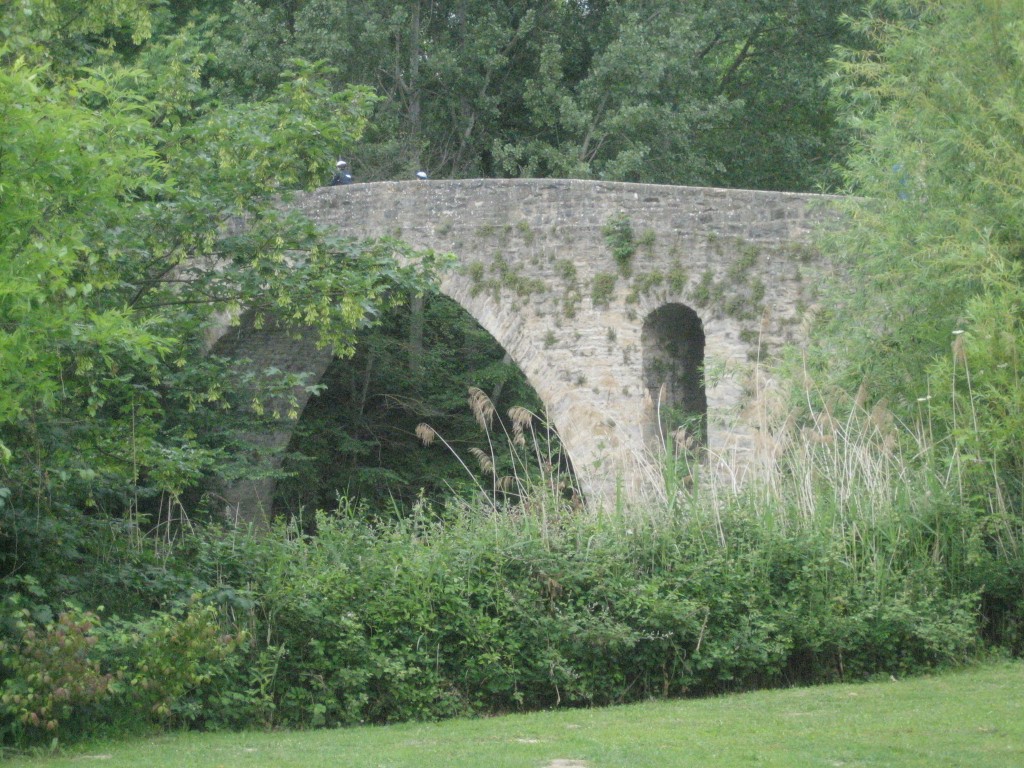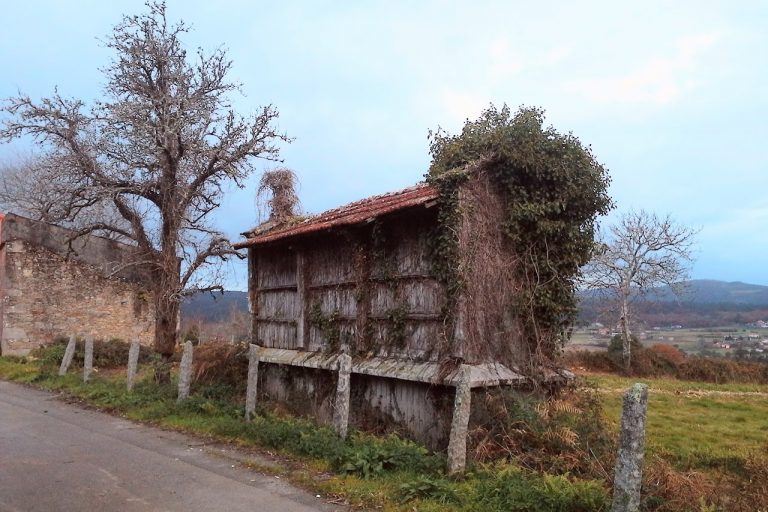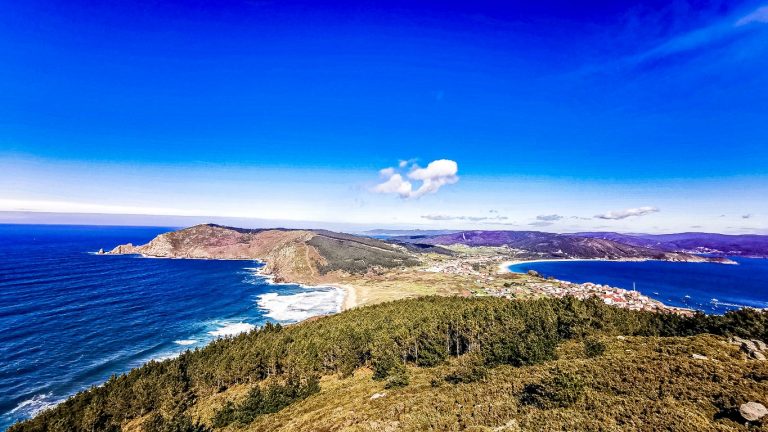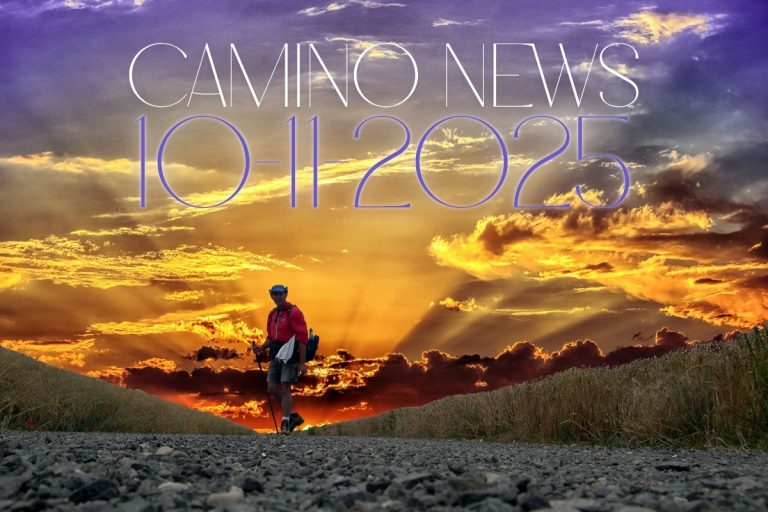

A New Stage Day – Beginning & Atmosphere
With the chime of the cathedral bells at your back, you leave Pamplona. The city, which yesterday was full of voices, lights and pincho culture, lies silent in the morning. You pass through the old gates, and with every step the noise of the city fades behind you. Ahead of you lies one of the most symbolic stages of the Camino Francés: the ascent to the Alto del Perdón, the “Mountain of Forgiveness.” Here physical effort, wind, vastness, and the view back on what has passed unite before you descend into the open landscape of Navarra.
Route & Elevation Profile
- Distance: approx. 24 km
- Elevation gain/loss: +500 m / –700 m
- Difficulty: medium
The stage begins flat, then steadily climbs through Cizur Menor. The ascent to the Alto del Perdón is strenuous but manageable. At the top, at 750 meters, wind turbines, wide views – and the famous pilgrim sculpture await. The descent is stony, slippery, and technically demanding, especially in rain. Afterwards, a rolling path through small villages leads you to Puente la Reina.

Description of the Way – With All Senses
Beyond Pamplona, the land shows its gentle side. You walk along field paths, past gardens and olive trees. Soon you reach Cizur Menor, a suburb with the hostel of the Order of Malta – a place where pilgrims have been welcomed for centuries.
From here the Camino ascends noticeably. Through Zariquiegui, where the last opportunity for rest before the climb awaits, the path leads you higher. The terrain becomes more barren, the sky wider. With every step, the anticipation for the pass grows.
Then you stand at the Alto del Perdón. The wind blows strongly around the turbines, the fields lie at your feet. Here at the top, where the well-known pilgrim sculpture stands – pilgrims in iron shown in eternal departure – you pause. Your gaze wanders back to Pamplona and forward toward the Castilian plains. The Camino seems here charged over centuries: a place of forgiveness, vastness, and new beginnings.
The descent demands your attention: loose stones, slippery spots, sharp bends. Cyclists are better off taking the road – and even for pilgrims on foot it means placing each step carefully. But soon the view opens again, and you reach Uterga – a village with bars and a welcome chance for refreshment.
Shortly after, you come to Muruzábal. From here, a small detour branches off to the mysterious chapel of Santa María de Eunate, a masterpiece of Romanesque architecture, shaped by the Templars, solitary amidst the fields. Whoever grants themselves the extra two kilometers experiences a place of great mysticism and quiet beauty.
Back on the main path, the Camino leads you to Obanos, a village with narrow streets and ancient tradition. Here the Camino Francés and the Camino Aragonés join – a symbolic point where paths flow together.
And then you arrive in Puente la Reina. The town carries the name of the mighty bridge, built in the 11th century by a queen of Navarra so that pilgrims could safely cross the Arga. With its six stone arches, it is a masterpiece of medieval architecture and one of the great symbols of the Camino. Crossing it, you feel that you have now reached the very heart of the Way of St. James.

Intermediate Places & Particularities
| Place | Distance from Pamplona | Particularity |
| Cizur Menor | ca. 4.8 km | Maltese hostel, first rest stop |
| Zariquiegui | ca. 11 km | Last village before the ascent |
| Alto del Perdón | ca. 13.5 km | Wind turbines, pilgrim sculpture, wide view, wind & mysticism |
| Uterga | ca. 17 km | Bars, refreshment opportunity |
| Muruzábal | ca. 19.8 km | Detour to Eunate (2 km), Romanesque Templar chapel |
| Obanos | ca. 21.6 km | Confluence of Camino Francés & Aragonés |
| Puente la Reina | ca. 24 km | Medieval bridge, historic pilgrim town |
Food, Overnight Stay & Supplies
- Pamplona offers numerous albergues and hotels, including the large municipal Albergue Jesús y María.
- Cizur Menor: Hostel of the Order of Malta (traditional, simple).
- Zariquiegui: small pilgrim hostel and bar.
- Uterga: several private accommodations, good refreshment options.
- Muruzábal: Albergue Jardín de Muruzábal (occasionally closed).
- Obanos: private accommodations, small infrastructure.
Puente la Reina: a wide variety of albergues, from the traditional Albergue de los Padres Reparadores to modern hostels and hotels.

The Special Feature Today
The stage is one of the most symbolic of the Camino: the ascent to the Alto del Perdón with its group of sculptures, the wind, the vastness – and the experience that the Camino leads not only through villages and cities, but also through inner landscapes.
The descent tests patience and concentration, but rewards with new encounters and the open landscape of Navarra. Those who take the detour to the chapel of Eunate also experience one of the most mystical places on the Way of St. James.
The finale in Puente la Reina with its imposing bridge is not only an architectural highlight, but also a spiritual one: here, for many, begins the feeling of truly being in the heart of the great Camino.
Reflection at the End of the Stage
Today you left Pamplona behind, you climbed, faced the wind – and were rewarded with vastness, mysticism, and history. Puente la Reina is not simply an end point of a stage: it is a symbolic place, a junction of paths, a place where the Camino gathers itself anew.
📊 Tabular Overview
| Stage | Start | Destination | Distance | Elevation gain/loss | Difficulty | Intermediate places |
| 4 | Pamplona | Puente la Reina | 24 km | +500 / -700 m | medium | Cizur Menor, Zariquiegui, Alto del Perdón, Uterga, Muruzábal, Obanos |
🌌 Camino of the Stars – Stage 4
Pamplona → Cizur Menor → Zariquiegui → Alto del Perdón → Uterga → Muruzábal (→ Eunate) → Obanos → Puente la Reina
Call to Action


